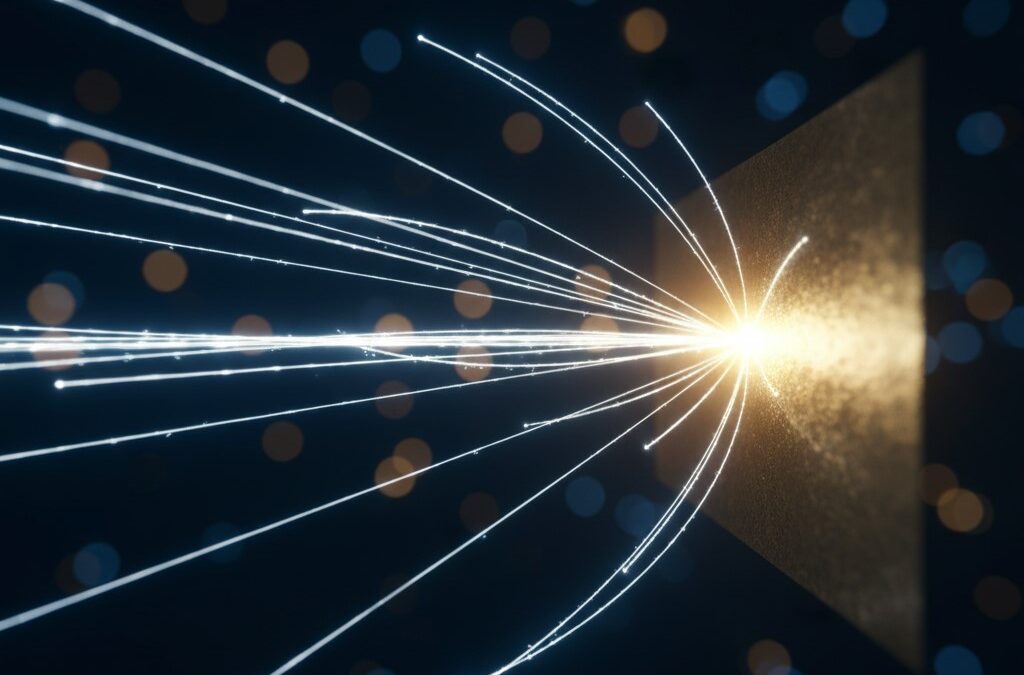[ez-toc] In this article, we will explore GS-NDG-9422, a cosmic missing link that has intrigued scientists and astronomers alike.
In the vast expanse of the cosmos, where celestial wonders unfold, a remarkable discovery has sent ripples through the scientific community. Astronomers using the unparalleled capabilities of the James Webb Space Telescope have stumbled upon an unusual galaxy, christened GS-NDG-9422, which may hold the key to unlocking the secrets of galactic evolution. This unique celestial body, a potential “missing link” in our understanding of the cosmos, has sparked intense curiosity and excitement amongst researchers worldwide.
GS-NDG-9422, or simply 9422, is no ordinary galaxy. Its characteristics are truly extraordinary, defying expectations and offering a glimpse into the enigmatic processes that shaped the universe billions of years ago. Unlike galaxies observed in our local universe, 9422’s gas cloud outshines its stars, a phenomenon that points towards a relentless frenzy of star formation within a densely packed gas environment. These stars burn at temperatures exceeding 140,000°F (80,000°C), nearly twice as hot as the typical massive stars we see in our own galactic neighborhood. This extreme heat triggers a cascade of photons that bombard the surrounding gas, causing it to emit an unusually bright signature, a beacon of cosmic energy that illuminates the vastness of space.
The Significance of GS-NDG-9422: A Missing Link in Galactic Evolution
The discovery of 9422 is not just a fascinating curiosity; it has profound implications for our understanding of the universe. It potentially represents a crucial “missing link” in the grand narrative of galactic evolution, bridging the gap between the universe’s first stars and the well-established galaxies we see today.
A Glimpse into the Early Universe
9422, observed roughly one billion years after the Big Bang, provides a rare window into the early universe, an era characterized by a chaotic and dynamic tapestry of formation and evolution. Scientists believe that the universe’s first stars, known as Population III stars, were colossal, incredibly hot, and short-lived, playing a pivotal role in seeding the universe with heavier elements. However, these elusive stars have never been directly observed. 9422, while not containing Population III stars, exhibits a blend of early and later star population characteristics, suggesting a transitional phase in galactic evolution. It hints at a time when the universe was transitioning from the primordial soup of the Big Bang to the intricate web of galaxies we observe today.
Unveiling the Mysteries of Stellar Evolution
The stars within 9422, with their extreme temperatures and massive sizes, offer a unique laboratory for studying stellar evolution. These celestial giants, born in the fiery crucible of the early universe, provide insights into the diverse populations of stars that existed in the universe’s youth. By observing these stars, astronomers can piece together the intricate processes that governed their formation and evolution, shedding light on the complex processes that led to the formation of galaxies.
The Promise of Further Exploration
The discovery of GS-NDG-9422 has ignited a new wave of exploration in the early universe. Researchers are actively seeking more examples of galaxies similar to 9422, hoping to determine how prevalent these conditions were in the early universe. This quest aims to refine our understanding of galaxy evolution, potentially revealing even earlier phases of cosmic development. It is a testament to the transformative power of observational astronomy, where each new discovery unlocks a plethora of new questions, pushing the boundaries of human knowledge and inspiring generations of scientists to explore the mysteries of the cosmos.
We also Published
- Periodic Table: Lectures on Basics – Elements, Groups, & Periods
Discover the periodic table’s structure, significance, and how it organizes elements based on their properties. - Greenland Mega-Tsunami: Unraveling the Mystery of Long-Lasting Seismic Waves
A massive landslide in Greenland’s Dickson Fjord triggered a mega-tsunami, generating seismic waves that reverberated around the globe for nine days, baffling scientists with their unusual longevity. - Solar Storms Impacting Earth: Risks, Solutions, and Auroras
Solar storms are a natural phenomenon with potentially devastating consequences for Earth’s technology and infrastructure. Discover the impact of these storms, their history, and measures to mitigate their risks.
The James Webb Space Telescope: A Beacon of Cosmic Discovery
The James Webb Space Telescope, a technological marvel that has revolutionized our understanding of the universe, played a pivotal role in the discovery of 9422. This infrared telescope, the largest and most powerful ever launched into space, is designed to peer into the depths of the cosmos, capturing faint light emitted by distant objects, allowing astronomers to witness the universe as it was billions of years ago. Its extraordinary sensitivity and ability to detect infrared radiation have opened a new chapter in astronomy, enabling us to probe the universe’s hidden secrets, including the elusive origins of galaxies.
The Power of Infrared Astronomy
Infrared astronomy, a vital tool in studying the universe, allows astronomers to see through clouds of dust and gas that obscure visible light. This is particularly important for studying the early universe, where dust and gas were much more prevalent, making it difficult to observe distant objects using visible light telescopes. The James Webb Space Telescope, with its powerful infrared capabilities, can penetrate these obscuring clouds, revealing the hidden treasures of the early universe.
The Impact of JWST on Our Understanding of the Universe
The James Webb Space Telescope has already yielded a wealth of groundbreaking discoveries, revolutionizing our understanding of the universe. Its observations have provided unprecedented insights into the formation of stars and galaxies, the evolution of planetary systems, and the composition of exoplanet atmospheres. It has opened a new era of astronomical exploration, propelling us closer to unraveling the universe’s greatest mysteries.
GS-NDG-9422: A Cosmic Enigma
GS-NDG-9422, with its unusual properties and potential significance, represents a cosmic enigma, challenging our current understanding of galactic evolution. The intense star formation within this galaxy, the unusually hot temperatures of its stars, and its unique blend of early and later star population characteristics, all contribute to its unique character. This discovery reminds us that the universe is a place of endless wonder and surprises, where new discoveries constantly challenge our preconceived notions and expand the horizons of human knowledge.
Exploring the Unknown
The discovery of 9422 is a testament to the power of scientific exploration, a pursuit driven by curiosity, passion, and a thirst for knowledge. It is a reminder that the universe is a vast and mysterious place, brimming with secrets waiting to be uncovered. Each new discovery, like the discovery of GS-NDG-9422, is a stepping stone on the path to unraveling the universe’s greatest mysteries.
The Future of Galactic Evolution Research
The discovery of 9422 is just the beginning. As the James Webb Space Telescope continues to observe the universe, we can expect to uncover even more intriguing and unexpected galaxies, each providing a glimpse into the universe’s dynamic history. This ongoing exploration will undoubtedly refine our understanding of galactic evolution, revealing the intricate processes that have shaped the universe we know and love.
Unveiling the Universe’s Secrets
The search for knowledge is a never-ending journey. Each new discovery, no matter how small, contributes to our understanding of the universe. The discovery of GS-NDG-9422 is a reminder that there is always more to learn, more to explore, and more to discover. The universe is a vast and magnificent place, filled with mysteries waiting to be unveiled. It is our responsibility as curious and inquisitive beings to continue exploring, seeking answers, and pushing the boundaries of human knowledge.
“We are just at the beginning of new discoveries and understanding.” – Alex Cameron, lead researcher on the GS-NDG-9422 discovery.
What does the discovery of GS-NDG-9422 tell us about the universe’s history? How will this discovery shape our understanding of galactic evolution? Will future observations reveal more galaxies like 9422, providing further insights into the early universe? These questions, and many more, will undoubtedly fuel the scientific community for years to come, propelling us ever closer to unraveling the universe’s deepest secrets.
RESOURCES
- James Webb Space Telescope spies a strange galaxy …
- James Webb Telescope Reveals a Novel Class of Galaxy …
- Galaxy GS-NDG-9422 (NIRCam Image)
- Galaxy GS-NDG-9422
- Cosmology News – Space News on Sea and Sky
- The NASA/ESA/CSA James Webb Space Telescope …
- James Webb Space Telescope
- Webb telescope finds ‘weird’ galaxy where gas outshines …
- James Webb telescope spots rare ‘missing link’ galaxy at …
- Webb Telescope Discovers Possible Link to Early Star …
- Weird galaxy: Did Webb find the missing link to first stars?








0 Comments